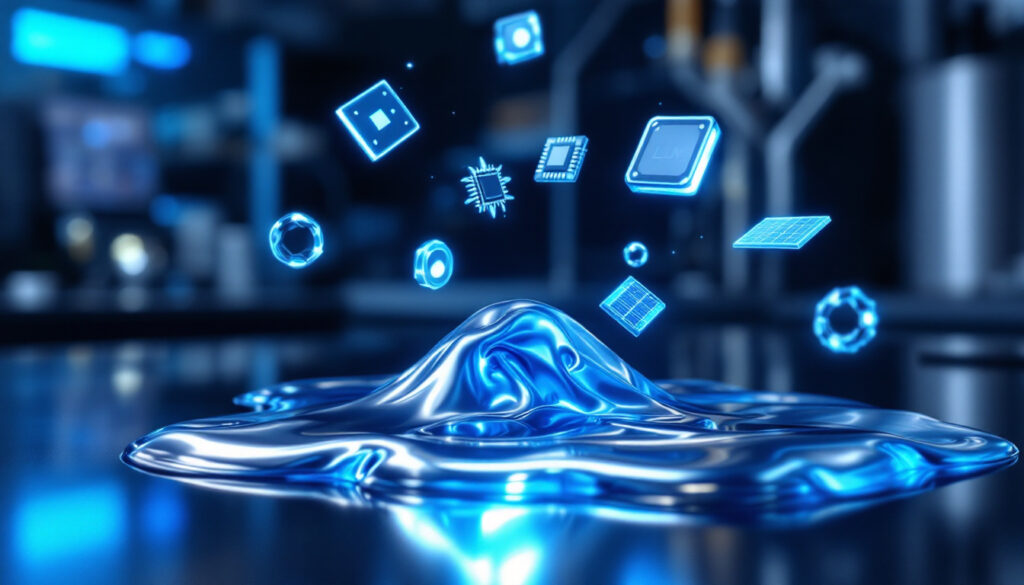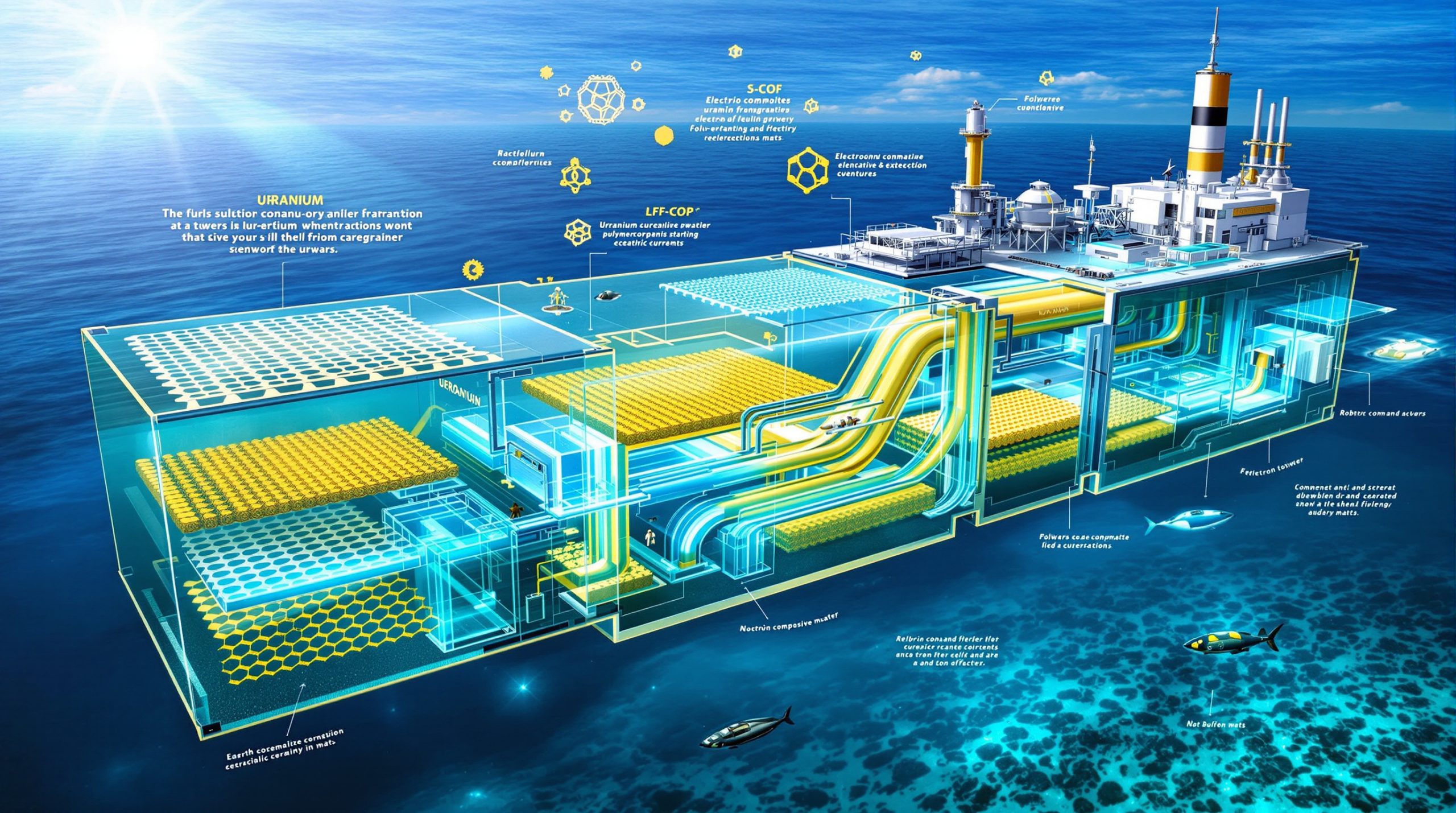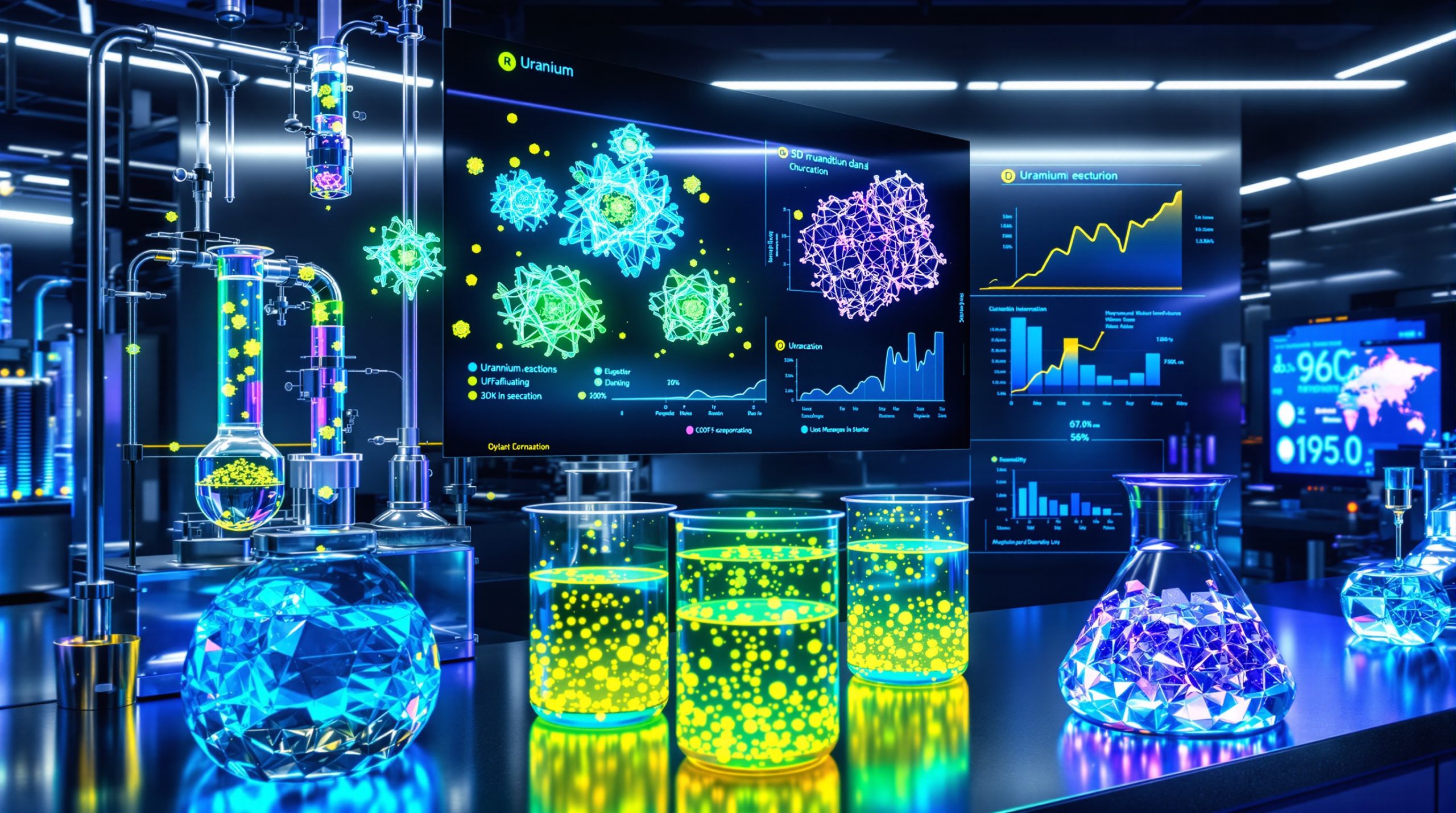What is Gallium and Why is Rio Tinto's Extraction Breakthrough Important?
Gallium, a soft silvery metal with a remarkably low melting point of 29.76°C, has emerged as one of the most critical minerals for modern technology. As a semi-metallic element that can literally melt in your hand, gallium has captured attention following Rio Tinto extracts first gallium in Canada. This versatile element has transformed from an obscure periodic table entry to a linchpin in advanced electronics and defense systems.
Global gallium production currently stands at approximately 600 tonnes annually, with a striking supply gap in North America—before Rio Tinto's breakthrough, the continent had no primary gallium production facilities. This shortage has created significant vulnerabilities in crucial technology supply chains, particularly as gallium has been classified as a critical mineral by both Australia and the United States.
The element's unique properties make it irreplaceable in numerous high-tech applications. As one materials scientist from Indium Corporation noted, "Gallium's role in semiconductor manufacturing is irreplaceable for high-frequency applications in 5G and aerospace." This critical nature becomes even more apparent when considering that the U.S. Department of Defense lists gallium as essential for phased-array radar systems used in modern fighter jets.
What makes this mineral particularly strategic is its supply concentration—approximately 80% of global gallium mineral deposits has been controlled by China, creating significant geopolitical vulnerabilities. This concentration has made Rio Tinto's achievement not just a commercial milestone but a matter of national security for North American countries.
Rio Tinto's Breakthrough: First Gallium Extraction in North America
The Historic Milestone in Quebec
Rio Tinto's successful extraction of primary gallium from bauxite at its Vaudreuil alumina refinery in Quebec represents a watershed moment for North American critical minerals production. This achievement marks the first time gallium has been extracted in the region using an alumina refining process, addressing a crucial gap in domestic supply chains.
The project's ambitions are substantial—the demonstration plant in Quebec aims to produce 3.5 tonnes of gallium annually, with plans to scale to commercial production of up to 40 tonnes per year. If successful, this commercial-scale operation would represent approximately 10% of global gallium supply, significantly reducing North America's dependence on foreign sources.
The Vaudreuil refinery processes approximately 1.5 million tonnes of bauxite annually, which naturally contains trace gallium concentrations between 50-100 parts per million. This existing operation provides an ideal foundation for gallium extraction without requiring new mining operations.
The Collaborative Research Effort
The extraction breakthrough stems from a strategic partnership between Rio Tinto and Indium Corporation that began in 2023, with approximately $15 million invested in research and development. The extraction was completed at Indium Corporation's research facility in Rome, New York, showcasing the cross-border cooperation driving this innovation.
Ross Berntson, President and CEO of Indium Corporation, emphasized the significance of the partnership: "This collaboration bridges North America's gap in gallium supply chains, positioning the region for technological leadership." Indium Corporation brings considerable expertise to the table, holding 40 patents in gallium processing technologies.
The partnership leverages ion-exchange technology to isolate gallium from alumina refinery byproducts, representing a significant technical advancement. As one Rio Tinto engineer explained, "Integrating gallium recovery without disrupting alumina output required modular reactor design"—highlighting the technical challenges that were overcome.
How Does Gallium Extraction from Alumina Refining Work?
The Technical Process
The extraction of gallium from alumina refining represents an elegant solution to resource maximization. During the Bayer process—the primary method for refining bauxite into alumina—gallium naturally concentrates in specific process streams, creating opportunities for recovery without dedicated mining operations.
Bauxite typically contains 50-100 parts per million of gallium, which becomes concentrated to 0.1-0.3% in alumina process streams during refining. This concentration, while still relatively small, makes recovery economically viable when integrated into existing operations.
The process begins when bauxite is dissolved in sodium hydroxide under high temperature and pressure. During this digestion phase, gallium follows aluminum's chemical pathway, accumulating in the sodium aluminate liquor. Unlike traditional methods that require dedicated mining, this approach harnesses a resource that would otherwise remain unused.
Rio Tinto's innovation involves specialized ion-exchange systems that selectively capture gallium ions from these process streams. The gallium is then further purified through a series of electrochemical precipitation steps to achieve the 99.99% purity required for semiconductor applications.
Challenges and Innovations
Extracting gallium economically from alumina refining has required overcoming significant technical hurdles. The primary challenge involves separating minute quantities of gallium from solutions containing numerous other elements without disrupting the primary alumina production process.
The integration of extraction processes into existing refinery operations demands precision engineering to prevent interference with the refinery's primary function. As China's Shandong Xinfa Group has demonstrated with similar byproduct recovery approaches, achieving 90% gallium purity requires sophisticated separation technologies.
Water usage and energy consumption represent additional challenges. Traditional gallium extraction methods are resource-intensive, but Rio Tinto's process aims to reduce the environmental footprint through closed-loop water systems and energy optimization. Initial assessments suggest the approach could reduce carbon emissions by approximately 30% per tonne of gallium compared to dedicated mining operations.
The modular design of the extraction system allows for scalability—beginning with pilot-scale production before expanding to full commercial capacity. This phased approach enables process optimization while minimizing capital risk.
Why is Gallium Considered a Critical Mineral?
Strategic Applications in Modern Technology
Gallium has become indispensable across multiple high-technology sectors, earning its classification as a critical mineral. The element's unique properties, particularly when combined with other elements to form compounds like gallium arsenide (GaAs) and gallium nitride (GaN), create materials with exceptional semiconductor properties.
The gallium nitride semiconductor market epitomizes this growing importance, with projections indicating a compound annual growth rate of 25% from 2023 to 2030. This explosive growth is driven by GaN's remarkable capabilities—its wide bandgap of 3.4 electron volts enables high-power, high-temperature performance that silicon-based semiconductors cannot match.
In electric vehicles, gallium components are essential for power conversion systems, with Tesla's 2025 models reportedly requiring approximately 200 grams of gallium per vehicle for onboard chargers. As EV adoption accelerates, secure gallium supplies become increasingly strategic for automotive manufacturers.
The telecommunications sector represents another crucial application area. As an IEEE researcher emphasized, "Gallium's optoelectronic properties are pivotal for laser diodes in fiber optic communications and medical devices." These properties make gallium irreplaceable in 5G infrastructure deployment, where high-frequency performance is paramount.
Defense applications further underscore gallium's critical nature. The element's role in radar systems, particularly the phased-array radars used in modern fighter jets and missile defense systems, means that supply disruptions directly impact national security capabilities.
Current Supply Constraints
The global gallium market faces significant structural challenges that amplify its criticality. With worldwide production limited to approximately 600 tonnes annually and no primary production in North America before Rio Tinto extracts first gallium in Canada, supply vulnerabilities have become increasingly concerning.
The concentration of production—approximately 80% from China—creates geopolitical risks that were starkly illustrated during the 2021-2023 gallium price spike, when prices reached $600 per kilogram following Chinese export controls. This volatility demonstrates how supply chain disruptions can rapidly impact technology sectors dependent on gallium.
The European Union formally recognized these risks in its raw materials facility insights, which designates gallium as a strategic resource requiring supply diversification. Similarly, the U.S. Defense Logistics Agency has established a strategic stockpile, accumulating approximately 12 tonnes of gallium in 2024 to mitigate supply disruption risks.
Recycling offers only limited relief to these supply constraints. Secondary gallium (recycled) accounts for just 15% of global supply, and as a UNEP report noted, "Recycling gallium from e-waste remains economically unviable below 95% purity," highlighting the technical challenges of circularity for this critical mineral.
What Are Rio Tinto's Future Plans for Gallium Production?
From Pilot to Commercial Scale
Rio Tinto has outlined an ambitious roadmap to transform its initial gallium extraction breakthrough into full-scale commercial production. The company is following a structured, phased approach that balances technical innovation with commercial pragmatism.
The initial R&D phase, which produced the first extracted gallium, has now been successfully completed. This milestone represents the culmination of extensive laboratory-scale testing and process development in partnership with Indium Corporation's technical team.
The next phase involves scaling up from laboratory to pilot operations. Rio Tinto plans to construct a demonstration plant in Saguenay–Lac-Saint-Jean, Quebec, with operations projected to begin by the third quarter of 2026. This facility will allow the company to validate its extraction techniques under real-world conditions while producing approximately 3.5 tonnes of gallium annually.
Data gathered from the demonstration plant will inform the final decision on full commercial deployment. The commercial-scale operation, if approved, would require approximately $200 million in additional capital expenditure but could produce up to 40 tonnes of gallium per year—a significant contribution to global supply.
Production Capacity Targets
The scale of Rio Tinto's ambition becomes apparent when examining the production targets against global market context. The company's potential commercial output of 40 tonnes annually would represent approximately 10% of worldwide gallium supply, fundamentally altering North American supply dynamics.
Jérôme Pécresse, Rio Tinto Aluminium CEO, highlighted the strategic significance of these targets: "Scaling gallium extraction aligns with our net-zero 2050 targets while addressing critical supply chain vulnerabilities." This dual focus on sustainability and security underscores the project's importance beyond simple commercial considerations.
The technical pathway to these targets involves optimizing electrochemical precipitation methods to achieve 99.99% purity—the standard required for semiconductor applications. Pilot testing will focus on refining these processes to maximize yield while maintaining product quality.
Financial projections suggest promising returns on investment at current gallium prices of approximately $450 per kilogram. However, the company recognizes that increasing global supply could potentially moderate prices, making operational efficiency crucial for long-term profitability.
The development timeline follows Rio Tinto's experience with other critical minerals—their scandium production in Quebec (3 tonnes/year) provides a model for the gallium scaling process, demonstrating the company's capability to commercialize specialty mineral extraction.
How Does This Fit Into Rio Tinto's Critical Minerals Strategy?
Expanding the Critical Minerals Portfolio
Rio Tinto's gallium initiative represents an integral component of the company's broader strategic pivot toward critical minerals strategy essential for the energy transition and advanced technologies. The company has systematically developed a diverse critical minerals portfolio across North America, including approximately 500 kilograms per year of scandium and 20 tonnes per year of tellurium.
This diversification strategy leverages Rio Tinto's existing operational footprint to maximize resource value. As a Rio Tinto spokesperson explained, "Valorizing byproducts boosts margins by 15-20% in alumina refining," highlighting the financial logic behind the company's approach to critical minerals.
The gallium project complements the company's other North American critical minerals initiatives, including lithium production in California and molybdenum extraction from copper operations. This portfolio approach creates operational synergies while positioning Rio Tinto as a critical supplier across multiple technology-oriented mineral markets.
The company's partnership with the Canadian government's Critical Minerals Research Initiative (2024-2027) further demonstrates the strategic alignment between Rio Tinto's business objectives and national resource priorities. This collaboration provides research support while facilitating market development for emerging critical mineral products.
Research-Driven Approach to Resource Maximization
Rio Tinto's methodology for developing critical minerals production exemplifies a research-driven approach to resource maximization. Rather than pursuing traditional greenfield mining operations, the company is focused on extracting additional value from existing processes and waste streams.
Lifecycle assessments indicate that this approach yields significant sustainability benefits, with a 30% reduction in carbon footprint per tonne of gallium compared to dedicated mining operations. This improvement stems from shared infrastructure, energy utilization, and the elimination of additional ore extraction requirements.
The strategy represents a fundamental shift in mining economics—focusing on value maximization rather than volume. By extracting higher-value minerals from existing operations, Rio Tinto can enhance revenue without proportionally increasing environmental impacts or capital expenditures.
From a portfolio perspective, gallium represents a smaller but growing revenue contributor compared to lithium in Rio Tinto's 2030 strategy. However, the profit margins on specialty minerals like gallium typically exceed those of bulk commodities, making them attractive despite their smaller production volumes.
The company continues to research additional critical minerals that could be extracted from its existing operations, including rare earth elements and other technology-oriented metals. This ongoing innovation pipeline ensures continued portfolio development aligned with emerging technology needs.
What Are the Economic and Strategic Implications?
Strengthening North American Supply Chains
The development of domestic gallium production capabilities in North America carries profound economic and strategic implications that extend well beyond Rio Tinto's corporate interests. This breakthrough directly addresses critical supply chain vulnerabilities in the North American technology ecosystem.
Currently, North American gallium demand is estimated to reach 60 tonnes per year by 2030, driven by semiconductor manufacturing, telecommunications infrastructure, and defense applications. With approximately 95% of gallium currently imported from China, the development of domestic production substantially reduces geopolitical supply risks.
A U.S. Department of Commerce official highlighted these security dimensions: "Domestic gallium secures supply for F-35 manufacturing," underscoring the mineral's importance for advanced defense systems. The U.S. Defense Logistics Agency's decision to stockpile 12 tonnes of gallium in 2024 further demonstrates the strategic significance of secure supply.
The Quebec government's $50 million investment in Rio Tinto's critical minerals projects reflects the regional economic benefits anticipated from developing this industry. Beyond direct employment at the production facilities, the initiative creates opportunities for downstream manufacturing in sectors ranging from semiconductor fabrication to advanced electronics assembly.
Government Support and Partnerships
Government engagement has been instrumental in facilitating Rio Tinto's gallium initiative, demonstrating the growing public-private collaboration in critical minerals development. This support extends beyond direct financial investment to include regulatory frameworks, research partnerships, and market development.
The Canadian government's Critical Minerals Strategy explicitly prioritizes gallium development, with policies designed to accelerate domestic production capabilities. This alignment between corporate investment and national priorities creates a favorable environment for project advancement while ensuring public interest considerations are incorporated.
Trade implications are substantial, particularly regarding reduced U.S. reliance on Chinese gallium imports. As supply chains reorient toward North American sources, the initiative could contribute to broader "friend-shoring" efforts aimed at securing critical mineral supplies from politically aligned nations.
The economic multiplier effects extend throughout the technology value chain. As one MIT materials scientist noted, "Rio Tinto's process could lower gallium prices by 20% by 2030," potentially catalyzing growth in downstream manufacturing sectors that rely on gallium-based components.
While the economic case is compelling, environmental considerations remain important. Some community stakeholders have raised concerns about bauxite waste handling in Quebec, highlighting the need for transparent environmental management alongside economic development.
What Industry Leaders Are Saying About This Development
The groundbreaking nature of Rio Tinto's gallium extraction achievement has generated significant commentary from industry leaders, providing insight into the milestone's broader significance for technology supply chains and mineral security.
Ross Berntson, President and CEO of Indium Corporation, emphasized the partnership's strategic importance: "This breakthrough positions North America as a leader in critical materials supply chains. By combining Indium Corporation's extensive gallium expertise with Rio Tinto's mining capabilities, we're creating a more sustainable and secure source of this vital technology material."
Jérôme Pécresse, Rio Tinto CEO Aluminium, framed the achievement within Rio Tinto's broader critical minerals strategy: "Our successful extraction of gallium at the Vaudreuil Plant demonstrates our commitment to maximizing the value of our operations by recovering critical minerals essential for the technologies shaping our future. This R&D project represents an important step in our work to strengthen North American supply chains."
A materials scientist from MIT provided context on the market impact: "Rio Tinto's process innovation could potentially lower gallium prices by approximately 20% by 2030 through increased supply and more efficient extraction methods. This price moderation would accelerate adoption in emerging applications like power electronics for renewable energy systems."
Industry analysts have noted that Indium Corporation's technical capabilities were crucial to the breakthrough. With 40 patents in gallium processing technologies, their Rome facility achieved 98% gallium recovery rates in bench-scale tests—significantly higher than industry averages.
Not all perspectives have been uniformly positive. Some environmental advocates have expressed concerns about bauxite waste management practices in Quebec, highlighting the importance of responsible production alongside supply chain security. This tension underscores the need for transparent environmental stewardship as the project advances toward commercial scale.
Apple's 2024 supplier report indirectly validates the importance of Rio Tinto's achievement by highlighting gallium shortages as a significant supply chain risk for consumer electronics. As technology companies
Ready to Capture the Next Major Mineral Discovery?
Stay ahead of the market with Discovery Alert's proprietary Discovery IQ model, which delivers real-time notifications on significant ASX mineral discoveries, transforming complex data into actionable investment insights. Explore how historic discoveries have generated substantial returns by visiting our dedicated discoveries page and begin your 30-day free trial today.




